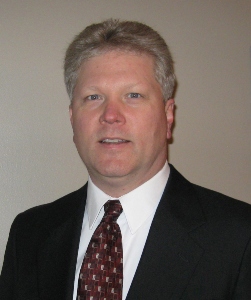2021 AFPM Summit Virtual Edition: Operator performance evaluation and enhancement improves refinery operations and safety
DAVE LEE and TIM OLSEN, Emerson
The year 2020 brought many challenges with COVID-19, which led to process facilities taking a closer look at their control room design to mitigate the virus spreading to those involved in operating the plant. For the first time, manufacturers were considering physical personnel separation—rather than control room consolidation—to diminish the risk of having several console operators out sick at the same time. While some processing facilities successfully managed to separate operators from one another for personal safety, did they consider the impact that this would have on operator performance and what additional modifications could improve their effectiveness, resulting in safer operations?
Decisions about control room design and operator workload are originally decided during plant startup and commissioning. However, many facilities have not revisited those decisions to reassess if those original assumptions are correct and reflect current operations, or checked if they meet today’s industry standards and best practices. In addition, operator workload may be very different now with the introduction of digital transformation, which is intended to complement the performance of the console operator (FIG. 1). Although these intentions may have been good, technology alone is not the answer to improving the effectiveness of operators. A good starting point is to first understand industry best practices, and then benchmark your facility to uncover gaps in compliance and performance.

FIG. 1. With the introduction of digital transformation, which is intended to complement the performance of the console operator, operator needs and workloads may be very different from when the systems were designed.
Processing facilities will often perform benchmarking, but a third-party consultant is usually necessary to ensure an unbiased evaluation. The consultant should have experience and subject-matter expertise to provide sound recommendations for improvement. This approach can also provide insights for various industries around the world with similar operations.
For example, consider utilizing an outside consultant to evaluate operator workload in multiple locations (main processing units, tank farms, utilities, etc.) to determine if a rebalancing of console and field operator responsibilities is needed to ensure operators are not overloaded or underutilized. The industry standards utilized in the assessment should include:
- API RP-755 Fatigue Risk Management
- ISA-101.01 Human Machine Interfaces (HMI) for Process Automation Systems
- ISA-18.02 Management of Alarm Systems for the Process Industries
- ISO-11064 Control Room Design
- ISA-106 Procedural Automation for Continuous Process Operations.
The objective of utilizing industry standards and best shared practices is to evaluate these main categories:
- Accurate number of operators
- Competent operators
- Appropriate tools in place
- Optimal environment.
Foundational to all is the need to have the correct number of operators—organized and managed in a consistent manner—to perform their required duties with a balanced and reasonable workload. Additionally, because it is important to understand how this workload is impacted by fatigue, an effective fatigue risk management plan should be developed.
Once you know the correct number of operators needed, it is essential to ensure that they are suitable for the tasks to which they are assigned and competent to do the job. This requires the selection process to identify which candidates have the necessary skills and aptitudes. Effective, competency-based training and assessment will ensure that these candidates obtain and maintain the necessary capabilities to perform their duties.
The next objective may require the most focus, both in terms of investment and resources: providing the right tools enabling your operators to do their jobs. There are tools available that reduce workload through the application of technology, such as improved regulatory control, advanced process control (APC) and procedural automation. Conversely, there are tools that directly address the operator’s situational awareness, such as the human machine interface (HMI), alarm management system and communications.
Finally, there is the environment in which the operators work. This includes both the physical environment, commonly known as the control room, and the virtual environment of policies and procedures. All of these solutions must work together cohesively to provide the operator an optimal environment.
Addressing all of these areas at once is impractical, and the cost associated with a complete program can be significant. However, as you set goals for your facility, it is important to be able to identify where the biggest gaps are today to develop a program that incrementally addresses them. It is essential that at the very basic level, typically expressed in philosophy documents, there is a consistency to this approach. For example, knowing what your control room design philosophy requires can directly impact the HMI philosophy, which may in turn impact the alarm management philosophy.
As with any journey, you must understand where you started. In the last 15 years, there has been significant focus on operator performance goals with the development of new standards and an improved understanding of how to better apply human factors in your operational environment. There have also been tremendous advances in enabling technologies, most recently, under the umbrella of digital transformation. Perhaps for the first time in industry’s lifetime, we are resource and skilled constrained rather than technology constrained.
Could we have predicted the COVID-19 pandemic? Like the 1,000-year flood, would manufacturers have designed based on it? Perhaps not, but now there is a new norm, and processing facilities must be prepared in their operations before the next industry event.
ABOUT THE AUTHORS
David Lee is a Process Control Consultant for Emerson’s Control and Operator Performance Center of Excellence and a Chartered Engineer and Fellow of the Institution of Chemical Engineers in the UK. Mr. Lee spent the first 22 years of his career working in the chemicals industry in many roles, including engineering, IT, project management and operations management. For the last 14 years, he has worked as a human factors consultant across many different industry segments around the world. He is also active in standards development through his involvement in the International Society of Automation (ISA), where he sits on the Standards and Practices board and is Director for the Chemical and Petroleum Industries Division.

Tim Olsen is an AIChE Fellow with 31 years of experience in the refining industry, 23 of which have been with Emerson Automation Solutions. He is a Process Engineer with refining business knowledge within Emerson’s Control and Operator Performance group. Previously, Mr. Olsen was with UOP for 8 years as a Technical Advisor on refinery startups around the world. He is the past Chair of AIChE’s Fuels and Petrochemicals Division, and recently finished his 3-year term on the AIChE board of directors. He also served on the board of directors for Emerson’s Global Users Exchange, and is now an active member of AFPM’s OPCAT Steering Committee. He earned a BS degree in chemical engineering from Iowa State University, with an emphasis in industrial engineering and process control, and an MBA from the University of Iowa.







Comments